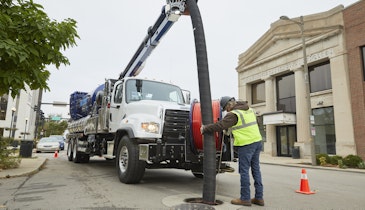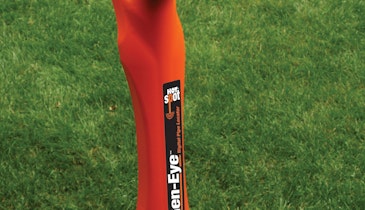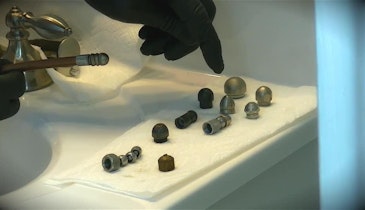Interested in Waterblasting?
Get Waterblasting articles, news and videos right in your inbox! Sign up now.
Waterblasting + Get AlertsAfew months ago this column discussed jetting safety and the tragic death of Chad Unverzagt, who was killed in a jetting accident in New Castle, Ind. Unverzagt was struck by the trailer jetter's nozzle after it broke free from the pipe he was cleaning and launched up out of the pipe.
Unverzagt had 30 years of experience in the business. This wasn't his first jetting job, yet in the midst of a routine job, something went horribly wrong. It's something that could happen to anyone operating this kind of equipment on any job, any day. Proper safety precautions are critical, but even the best operators sometimes take things for granted.
Until now, safety clothing for jetting was mostly limited to large pieces of armor designed for ultrahigh pressure jetting or blasting, but a new line of gear for mid-pressure jetting – the range typically used to clean sewer and drain lines – is bringing another layer of safety to the industry.
The garments are made from Dyneema, which manufacturer TST Sweden claims is the strongest fiber in the world. It is made of polyethylene fiber that is 15 times stronger than steel on a weight-for-weight basis. That allows for a high level of protection and without a lot of extra weight or bulk. The garments offer protection up to 7,500 psi with rotary or spinning and fan nozzles and 3,000 psi with a straight jet on a gun.
Jackets, pants, aprons and full one-piece suits are available, along with gloves. The garments are designed for safety, comfort and functionality, with lined insides and feature waterproof and dirt-repelling exteriors. The full one-piece suit weighs 5.5 pounds.
TST Sweden has been making heavier protective clothing for higher-pressure applications for a long time, but the new safety line is something US Jetting president Nick Woodhead pushed for and advocated. He says it's much more functional for this industry than the armored protective gear that's been available.
"Ultrahigh pressure gear is too hot in the summer and too cumbersome in the winter," Woodhead says. "This is just like a rain suit."
Woodhead says the new protective clothing is a great step, but it will take time and awareness for it to become a standard. He says at some point there will be a push for jetting companies to provide this type of safety gear, and eventually laws will change and it will be required.
"The big difficulty is people taking the mid-pressure range for granted; you're not operating at the 40,000 psi range that you know is going to kill you," Woodhead says.
The other major hurdle for safety in general, says Woodhead, is education. "People have got to be trained, and they need to be trained officially. We run training programs all the time. Most people get trained by the former operator, but who trained him? Formal training and formal education is what's vitally important in this industry."
More information about TST Sweden's ProOperator safety gear is available at www.tst-sweden.com





